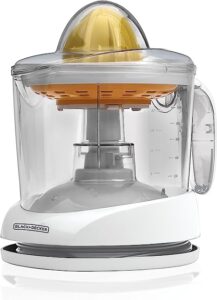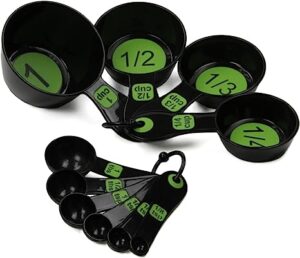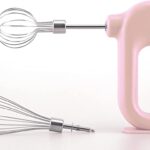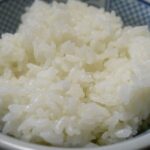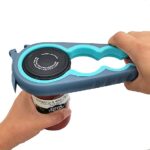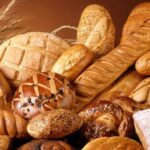How To Make Your Kitchen Safe For The Elderly
Food has a magical way of bringing people together, and the heart of that magic often lies in the kitchen—the ultimate gathering spot for families and friends. It’s not just about cooking and sharing meals; it’s where stories are shared, laughter fills the air, school assignments are tackled, and cherished memories are created.
For our beloved older adults who choose to age gracefully at home, the kitchen takes on an even greater significance. That’s why we want to ensure this special space is not only safe and secure but also customized to be genuinely senior-friendly. So, let’s explore some essential aspects of kitchen safety to create a kitchen that becomes a cozy, safe haven for our elderly loved ones.
Kitchen Safety Tips
Ensuring a safe kitchen environment is essential for the elderly, who may face mobility and balance challenges. Implementing some key kitchen safety tips can significantly reduce the risk of accidents and injuries. Here are a few tips for you to consider.
Remove tripping hazards: Clear clutter and keep the kitchen floor free from any obstacles or loose rugs that could cause a fall.
Adequate lighting: Install bright lighting to improve visibility and reduce the risk of missteps or accidents.
Secure rugs and mats: Kitchen floors, especially tile flooring, can become hazardous for an elderly person. Use non slip mats or double-sided tape to keep rugs and mats firmly in place and reduce the risk of slipping.
Organize kitchen essentials: Arrange frequently used items at waist level to minimize the need for reaching or bending.
Grab bars: Installing grab bars at strategic points in the kitchen can help elderly people to improve mobility and move around with confidence.
Safe storage: Keep sharp objects, cleaning supplies, and potentially harmful items in locked or out-of-reach kitchen cabinets.
Stable step stool: Provide a sturdy, non-slip step stool for reaching higher shelves, ensuring it has a handrail for additional support.
Easy-to-read labels: Use large, clear labels on containers to avoid confusion and prevent mishandling of ingredients or substances.
Use plastic utensils: Disposable plastic utensils help to make cleanup quick and easy. However, some people may have a problem with their non-biodegradable nature, making them environmentally unfriendly.
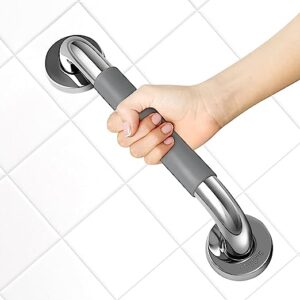
Fire Safety Tips
Kitchen fires are a common hazard, and the elderly may face difficulties in responding quickly to such emergencies. To improve fire safety in the kitchen here are a few tips to consider.
Install smoke detectors: Place smoke detectors near the kitchen area and regularly check their functionality.
Fire extinguisher: Keep a fire extinguisher in the kitchen and ensure the elderly know how to operate it.
Avoid loose clothing: Remind older adults to wear close-fitting clothing while cooking to prevent garments from catch fire. Ensure that short sleeves are worn as they won’t brush against hot plates and will prevent burns.
Turn pot handles inwards: This is one of the kitchen safety tips that I even teach my grandchildren! Ensure that pot and pan handles face inward to prevent accidental spills, knockovers, or become potential fire hazards. Encourage the use of pot holders! Accidentally grabbing a burning hot handle will cause higher risk of injury.
Use of gas: Ensuring kitchen safety includes proper ventilation and regular maintenance of your gas range to minimize the risk of gas leaks and potential hazards. Leaking gas can be extremely dangerous as well as a potential fire hazard. Ensure that your gas canisters have a safe automatic shut off feature that prevents leakages.
Supervise cooking: If possible, have someone assist or supervise senior loved ones while cooking, especially if they have memory or mobility issues. Hot stove tops and pots and pans that are forgotten can become potential fire hazards very quickly and this is not what you want!
Food Preparation
Older adults love food cooking as it allows them to express creativity and preserve cherished family recipes, invoking nostalgia and creating a sense of connection with their past and loved ones. Additionally, cooking provides a satisfying sensory experience, stimulating taste, smell, and touch, making it a delightful and engaging activity for seniors.
However, food safety is vital to prevent foodborne illnesses and accidents in the kitchen. For elderly individuals with weaker immune systems, this becomes even more critical. Here are some tips you can follow for older adults and senior loved ones who enjoy being in the kitchen.
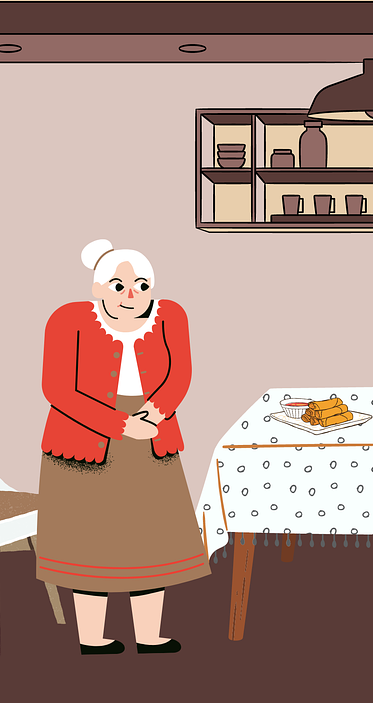
Handwashing: Emphasize the importance of regular handwashing before getting ready to prepare meals, handling food, and after using the restroom. Dirty, unwashed hands are one of the main concerns when it comes to food safety.
Proper food storage: Teach seniors about correct food storage to prevent contamination and spoilage. This is a basic kitchen safety tip that can be followed by people of all ages too!
Use of cutting boards: Encourage the use of stable, non-slip cutting boards to avoid accidents while chopping ingredients.
Cut resistant gloves: Cut resistant gloves are ideal for an older adult. By protecting hands, they prevent cuts from sharp knives and other sharp objects.
Easy-to-use utensils: Provide ergonomic and lightweight utensils that are easier to grip and handle for seniors with reduced hand strength. This takes away the strain of using heavy utensils when cooking food. knives with ergonomic grips prevent accidents, greatly increasing kitchen safety.
Dish towels: Ensure that dish towels are always clean and dry. Damp towels will attract bacteria and micro-organisms that can be dangerous to the health of people in the home.
Adapted cooking methods: Offer simple recipes and cooking techniques that are easy to follow and minimize risks in the kitchen.
Coffee maker: Everyone lobes a cup of coffee in the morning! A coffee machine for the older adults should have large, easy-to-read buttons and a programmable timer for added convenience and user-friendliness.
Take a Look at Some Great Kitchen Gadgets
Take a look at my article on Kitchen Gadgets for the Elderly. You will find a choice of inexpensive gadgets that are both fun to use and safe!
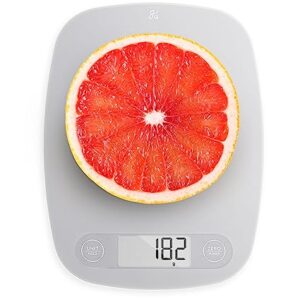
Pull Out Shelves
Pull-out shelves are an excellent solution for enhancing kitchen accessibility and safety for senior loved ones. These shelves can be installed in lower cabinets, making it easier to reach pots, pans, and other kitchen items without the need to bend down or strain. The smooth sliding mechanism ensures ease of use, preventing the risk of injury associated with traditional shelving units.
These shelves also provide better visibility of stored items, reducing the chances of items getting lost or forgotten at the back of the cabinet. Older adults can now maintain a more organized kitchen space, leading to a more enjoyable and efficient cooking experience.
Senior Friendly Appliances
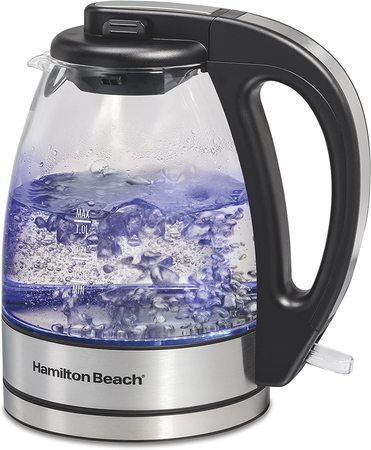
Many appliances have features that will increase kitchen safety without compromising on ease of use.
Appliances that are senior-friendly are designed with accessibility and ease of use in mind, making daily tasks simpler and safer for older adults. These appliances typically feature large, easy-to-read displays and intuitive controls, reducing the risk of confusion or frustration. As seniors age, eyesight can deteriorate making small displays harder to read.
With ergonomic handles and smooth gliding shelves, seniors can access their contents effortlessly. Safety features, such as automatic shut-off and temperature controls, provide added peace of mind. Overall, senior-friendly appliances promote independence and enhance the overall kitchen experience for elderly users.
Electric kettles: Look for electric kettles with an automatic shut off feature to prevent boiling water in kettles drying up. A senior-friendly electric kettle should have a clear and prominent water level indicator, making it effortless for older adults to see how much water is inside the kettle. This helps prevent overfilling or running the kettle with insufficient water, ensuring safe and efficient boiling.
Toasters: A senior-friendly toaster should have oversized, easy-to-press buttons with clear labels for functions like “toast,” “cancel,” and “bagel.” This design makes it effortless for elderly users to operate the toaster without straining their eyes or fingers. they should also feature wide slots with a high-lift lever: These toasters can accommodate various bread sizes, including thicker slices, artisan breads, muffins, bagels, and toasted treats. Additionally, a high-lift lever allows seniors to safely retrieve their toast without reaching too far into the toaster, reducing the risk of burns or accidents.
Air Fryers: A senior-friendly air fryer should have simple digital controls and an intuitive digital control panel with large, easy-to-read buttons and clear icons. This design allows elderly users to select cooking settings and adjust temperature and time effortlessly, making the cooking process more straightforward and enjoyable. An ideal air fryer for seniors should have an automatic shut-off feature that turns off the appliance after the cooking cycle is complete. This safety feature prevents overcooking and eliminates the need for seniors to closely monitor the cooking process, providing them with added peace of mind while using the appliance.
Microwave: A senior-friendly microwave should have a generously sized display with high-contrast text and large buttons that are easy to read and press. This design ensures that elderly users can operate the microwave effortlessly, without straining their eyes or struggling to locate the right buttons. The microwave should come with pre-programmed, one-touch cooking options for common foods like popcorn, potatoes, chicken, roasts, or baking. This feature simplifies the cooking process, as seniors can just press a single button to start cooking their favorite dishes without the need to set specific power levels or cooking times.
Blenders: A senior-friendly blender should have large, easy-to-press buttons with clear labels for different functions such as “blend,” “pulse,” and “ice crush.” This design enables elderly users to operate the blender without straining their eyes or struggling to identify the right buttons, making blending tasks more convenient. The blender should feature a secure lid with a user-friendly pour spout. This design ensures that the lid stays in place during operation, preventing any accidental spills. Additionally, the easy pour spout allows seniors to safely transfer blended contents without lifting or tilting the entire blender jar, reducing the risk of injuries and mess.
Take a Look at Some Great Kitchen Appliances
Take a look at my article on Kitchen Appliances for the Elderly.
The Wrap
By implementing these kitchen safety tips, incorporating pull-out shelves, emphasizing fire safety, and promoting safe food preparation, you can create a secure and comfortable kitchen environment for the elderly. This will empower your loved ones to maintain their independence and enjoy the pleasure of cooking and preparing meals.
10 Best Egg Beaters for 2024
Elevate Your Cooking with Versatile Egg Beaters In this post, I have identified 10 Best Egg Beaters for 2024 that range from traditional to ultra-mod,…
Tips For Cooking Perfect Rice Every Time
Tips for Perfect Rice Every Time: Fluffy and Tender Grains Rice is such a versatile side, and cooking it should be easy! I say that…
Best Kitchen Gadgets for the Elderly
Kitchen Gadgets for the Elderly Welcome to my guide on essential kitchen gadgets for the elderly. As we age, certain tasks in the kitchen can…
Baking Tips for Perfect Bread and Pastry
Master the Art of Baking Perfect Bread and Pastries: Essential Tips and Techniques Why, one would ask, in this crazy busy life, do people still…

